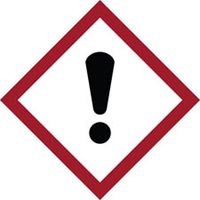| The Home page of ILPI's Safety Data Sheet (SDS) Resource, the leader in SDS information since 1995! | |
| The history and philosophy behind this resource. | |
| A curated collection of books and reference materials concerning Safety Data Sheets and closely related topics. | |
| Paste your plain text SDS into the SDS-Demystifier, and it will be converted into a hypertext-enriched document with links to detailed explanations of each key term. | |
| An extensive list of frequently asked questions about Safety Data Sheets including regulations, content, compliance, and more. | |
| A humorous take on Safety Data Sheet jargon. Fill in the blanks on our entry form to generate a personalized Unsafety Data Sheet to share with your coworkers. | |
| Since 1995, we've maintained this massive curated list of the best places to find Safety Data Sheets on the Internet. | |
| You are here! Way more than a glossary, this hypertext-enhanced resource covers hundreds of SDS-related terms and expert knowledge. Each entry includes both the SDS relevance and links to additional authoritative resources. | |
| Archived results of Safety Data Sheet related polls taken by some of our millions of site visitors | |
| The OSHA regulations behind SDS regulations, including the inspection guidelines and over 400 official interpretations letters under the Hazard Communication Standard | |
| Commercial suppliers of SDS authoring and management software as well as cloud compliance services. | |
| Commercial companies that will create SDS's for your specific needs as well as SDS translation companies. |

Safety signs, banners, and scoreboards? Get yours at Safety Emporium!
Definition
A sensitizer is defined by OSHA as "a chemical that causes a substantial proportion of exposed people or animals to develop an allergic reaction in normal tissue after repeated exposure to the chemical."
OSHA further defines a respiratory sensitizer as a chemical that will lead to hypersensitivity of the airways following inhalation of the chemical.
OSHA also defines a skin sensitizer as a chemical that will lead to an allergic response following skin contact.
Sensitization is the immunological response that causes the allergic reaction upon repeated exposure.
The condition of being sensitized to a chemical is called chemical hypersensitivity.
Additional Info
Certain chemicals have no immediate health effects. But if you are exposed to them several times, they can make you allergic or sensitive to other chemicals, often quite suddenly. A classic example is formaldehyde (CH2O). Typical reactions to sensitizers can include skin disorders such as eczema and respiratory disorders such as asthma.
Sensitization is an immune response. Therefore, some people may be easily sensitized while others may never be affected. Like any allergic response, a reaction to a sensitizer can be fatal in rare circumstances. You can not predict your reaction to sensitizing chemicals, so treat all sensitizers with great respect and follow proper chemical safety and hygiene procedures.
Per OSHA, "sensitization includes two phases: the first phase is induction of specialized immunological memory in an individual by exposure to an allergen. The second phase is elicitation, i.e., production of a cell-mediated or antibody-mediated allergic response by exposure of a sensitized individual to an allergen." In essence, the immune system is trained and primed to respond to the chemical.
Once you are sensitized to a particular chemical, even minute amounts will cause symptoms. Sensitization is usually a life-long effect, so avoid working with such substances even if you have suffered no ill effects in the past.
Traditionally, sensitization has been determined using animal testing. On April 10, 2018, the US EPA released a draft Science Policy to reduce the use of animals in testing chemicals to evaluate whether they cause an allergic reaction, inflammation or sensitization of the skin. The document was titled Draft Interim Science Policy: Use of Alternative Approaches for Skin Sensitization as a Replacement for Laboratory Animal Testing and describes the science behind the non-animal alternatives that can now be used (in vitro, in silico, in chemico) to identify skin sensitization. While the EPA has since committed to reducing animal testing for pesticide toxicity determinations, this effort has moved along slowly for a variety of reasons. Further guidance and action from the EPA has continued, although a cynic might argue these agency actions are less about saving animals and more about deregulation and cutting corners. A list of Alternative Methods Accepted by US Agencies is maintained by the NTP's NICEATM.
Books Available
NOTE: We may collect a share of sales or other compensation from the links in the following list:
- "Reversibility of Chronic Degenerative Disease and Hypersensitivity, Vol. 1: Regulating Mechanisms of Chemical Sensitivity", Hardcover, 594 pages, 2010. Estimated price $212.06. Info and/or order.
- "Reversibility of Chronic Degenerative Disease and Hypersensitivity, Vol. 2: Clinical Manifestations", Hardcover, 723 pages, 2014. Estimated price $234.00. Info and/or order.
- "Reversibility of Chronic Degenerative Disease and Hypersensitivity, Vol. 3: Diagnostic Considerations of Chemical Sensitivity", Hardcover, 413 pages, 2014. Estimated price $141.98. Info and/or order.
- "Reversibility of Chronic Disease and Hypersensitivity, Volume 4: The Environmental Aspects of Chemical Sensitivity", Hardcover, 1,018 pages, 2017. Estimated price $223.55. Info and/or order.
- "Reversibility of Chronic Disease and Hypersensitivity, Volume 5: Treatment Options of Chemical Sensitivity", Hardcover, 930 pages, 2017. Estimated price $197.98. Info and/or order.
- "Chemical Sensitivity: A Guide to Coping With Hypersensitivity Syndrome, Sick Building Syndrome and Other Environmental Illnesses", Paperback, 291 pages, 2008. Estimated price $25.00. Info and/or order.
- "Latex Intolerance: Basic Science, Epidemiology, and Clinical Management", Paperback, 292 pages, 2004. Estimated price $55.62. Info and/or order.
SDS Relevance
The hazard classification process required under Appendix A of the OSHA Hazard Communication Standard covers respiratory and skin sensitization at Paragraph A.4. Substances with high frequency of occurence of human sensitization are classified as sub-category 1A, and those with low to moderate frequency are classified as sub-category 1B. When data are not sufficient for these determinations, the substance is classified as Category 1.
The pictogram used for Category 1 skin sensitizers is an exclamation mark and for respiratory sensitizers is the health hazard symbol, both of which are shown below and are available from our retail partner, Safety Emporium.
However, if the health hazard pictogram is included for respiratory sensitization, then the exclamation point pictogram will not appear on the label where it is normally used for skin sensitization or skin or eye irritation. This hierarchy is designed to keep labels uncluttered, so be sure to remind yourself that if it's bad to inhale a substance, it is probably bad to get on your skin!
Avoid working with sensitizers whenever possible. If you have no viable substitute and you must work with a sensitizer, use a fume hood or other type of engineering control if available. The Safety Data Sheet should list appropriate personal protective equipment such as gloves or even a respirator in Section 8 (exposure controls/personal protection), so be sure to use the recommended type of each!
Further Reading
- OSHA standard 1910.1048, Formaldehyde.
- ExtoxNet FAQ on sensitive populations as well as Experiencing an Adverse Immune Response.
- CPSC Staff's Strong Sensitizer Guidance Document at the US Consumer Product Safety Commission.
- A NIOSH Alert: Preventing Sensitization and Disease from Beryllium Exposure.
- General Use SOP for Sensitizers at Stanford University.
- Respiratory or Skin Sensitizers at the University of Arkansas.
- Selecting The Right Glove: Understanding Latex Allergy And Glove Chemistry by Edward Lehrman, MD.
- The Health and Safety Authority of Ireland has some a fact sheet titled Guidelines On Occupational Asthma.
See also: asthma, irritant, urticaria
Additional definitions from Google and OneLook.



